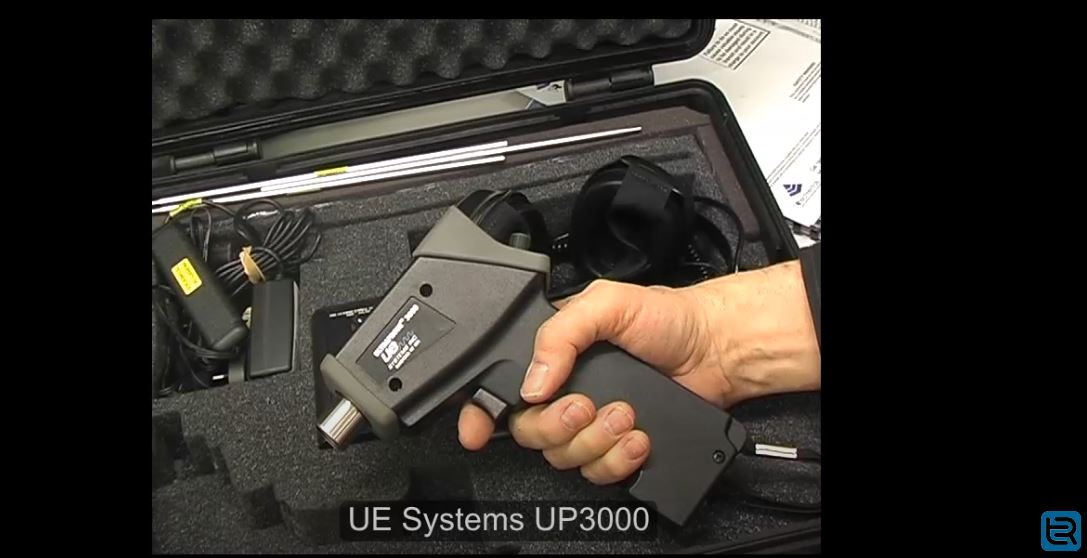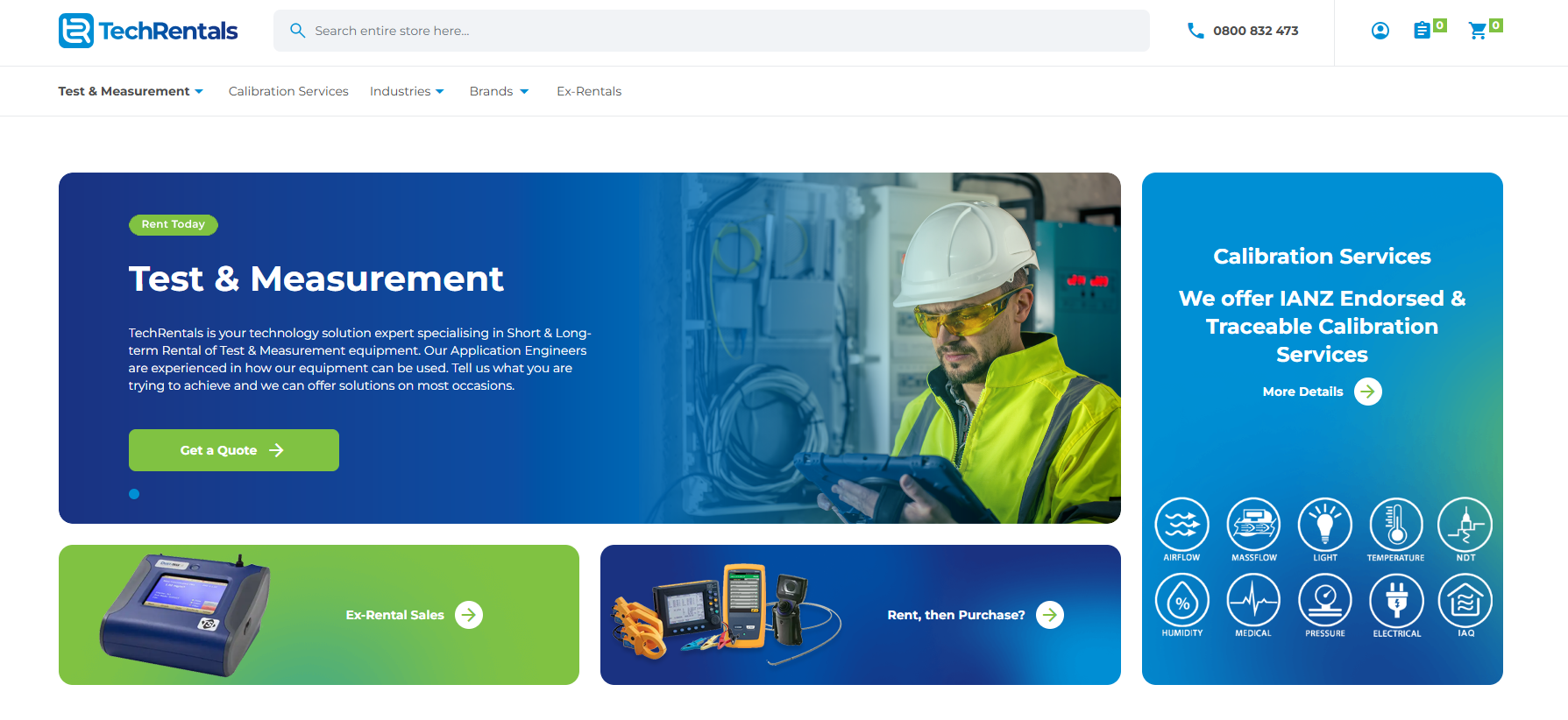Electric motors are the backbone of industry. The U.S. Department of Energy estimates that in the U.S. alone there are 40 million motors operating in industry, and the fact that those motors use 70 % of the electricity consumed by industry indicates their importance.
Thermal imagers are very useful for both troubleshooting motor problems as well as for condition monitoring, for longterm preventive maintenance. Using a handheld thermal imager, you can capture infrared temperature measurements of a motor’s temperature profile as a two- dimensional image. Fluke thermal imagers now include IR-Fusion®*, a technology that fuses a visual, or visible light, image with an infrared image for better identification, analysis and image management. * The Fluke Ti20 comes with InSideIR™ analysis and reporting software with free updates for the life of the product. Thermal images of electric motors reveal their surface temperature, a key component of their operating condition. Such condition monitoring is important as a way to avert many unexpected motor malfunctions in systems that are critical to manufacturing, commercial and institutional processes. Such preventive actions are important because when a critical system fails, it inevitably increases costs, requires the reallocation of workers and material, reduces productivity and, if not corrected, can threaten corporate profitability and, possibly, the well being of employees, customers and/or clients.
What to check?
Ideally, you should check motors when they are running under normal operating conditions. Unlike an infrared thermometer that only captures temperature at a single point, a thermal imager can capture temperatures at thousands of points at once, for all of the critical components: the motor, shaft coupling, motor and shaft bearings, and the gear- box. Remember: each motor is designed to operate at a specific internal temperature. The other components should not be as hot as the motor housing.
What to look for?
All motors should list the normal operating temperature on the nameplate. While the infrared camera can not see the inside of the motor, the exterior surface temperature is an indicator of the internal temperature. As the motor gets hotter inside, it also gets hotter outside. Thus, an experienced thermographer who is also knowledgeable about motors can use thermal imaging to identify conditions such as inadequate airflow, impending bearing failure, shaft coupling problems, and insulation degradation in the rotor or stator in a motor.
In general, it is a good idea to create a regular inspection route that includes all critical motor/ drive combinations. Then, save a thermal image of each one on a computer and track measure- ments over time. That way, you’ll have baseline images to compare to, that will help you determine whether a hotspot is unusual or not, and, following repairs, to help you verify if the repairs were successful.
What represents a "red alert?"
Equipment conditions that pose a safety risk should take the highest repair priority. After that, consider that each motor has a maximum operating temperature that usually appears on its nameplate and represents the maximum allowable rise in temperature of the motor above ambient. (Most motors are designed to operate in ambient temperatures that do not exceed 40 °C.) Generally speaking, each 10 °C rise above its rated temperature cuts a motor’s life in half. Regularly scheduled infrared inspections of electric motors identify motors which are starting to overheat. Even an initial thermal image will reveal whether a motor is running hotter than a similar motor doing a similar job.
What's the potential cost of failure?
For a specific motor, you could do an analysis based on the cost of the motor, the average amount of time a line is down from a motor failure, the labor required to change out a motor, etc. Of course, productivity losses from downtime vary from indus- try to industry. For example, lost production from a papermaking machine can be as much as $3,000 per hour while in the steel casting industry losses can be as high as $1,000 per minute.
An imaging tip:
Sometimes it is difficult to get a direct view of the component you want to inspect, such as a motor or gearbox mounted high up on the top of a machine. Try using a thermal mirror to see the reflection of the component. An aluminum sheet (1/8-in. thick) works very well. Either carefully slip it temporarily into place or mount it permanently in a location that facilitates your inspection. The aluminum does not have to be highly polished to be effective. However, if you are trying to secure true (as opposed to comparative) temperature readings, you must learn how to “characterize” the mirror and adjust your emissivity readings accordingly. For this technique to work, the surface of the mirror needs to be clean, since oil and other coatings will alter the reflective properties of the mirror.
Follow up actions:
If you suspect overheating is the result of one of the following, consider the action described:
- Inadequate airflow. If a brief shutdown is possible without affecting the plant process, shut off the motor long enough to perform minor cleaning on the air intake grills. Schedule a thorough motor cleaning during the next planned plant shutdown.
- Unbalanced voltage or an overload. The usual cause, a high-resistance connection in the switchgear, disconnect, or motor connection box, can usually be pinpointed by a thermographic inspection and confirmed using a multimeter, clamp meter or a power quality analyzer.
- Impending bearing failure. When the thermal images indicate an overheating bearing, generate a maintenance order to either replace the bearing or lubricate the bearing. While somewhat expensive and requiring an expert, vibration analysis can often help you determine the best course of action.
- Insulation failure. If it will not too greatly impact production, de-rate the motor in accordance with NEMA standards. Generate a work order to replace the motor as soon as possible. e. Shaft misalignment. In most cases, vibration analysis will confirm a misaligned coupling. If a shutdown is possible, dial indicators of laser-alignment devices can be used and the misalignment can be corrected then and there.
Whenever you discover a problem using a thermal imager, use the associated software to document your findings in a report that includes a thermal image and a digital image of the equip- ment. It’s the best way to communicate the problems you found and the suggested repairs.
Fluke. Keeping your world up and running.®
Fluke Corporation PO Box 9090, Everett, WA 98206 U.S.A. Fluke Europe B.V. PO Box 1186, 5602 BD Eindhoven, The Netherlands For more information call: In the U.S.A. (800) 443-5853 or Fax (425) 446-5116 In Europe/M-East/Africa +31 (0) 40 2675 200 or Fax +31 (0) 40 2675 222 In Canada (800)-36-FLUKE or Fax (905) 890-6866 From other countries +1 (425) 446-5500 or Fax +1 (425) 446-5116 Web access: http://www.fluke.com
©2005-2008 Fluke Corporation. Specifications subject to change without notice. Printed in U.S.A. 1/2008 2519596 A-EN-N Rev B



